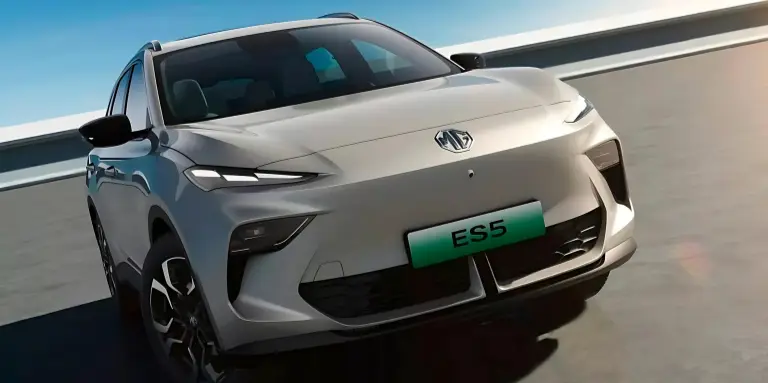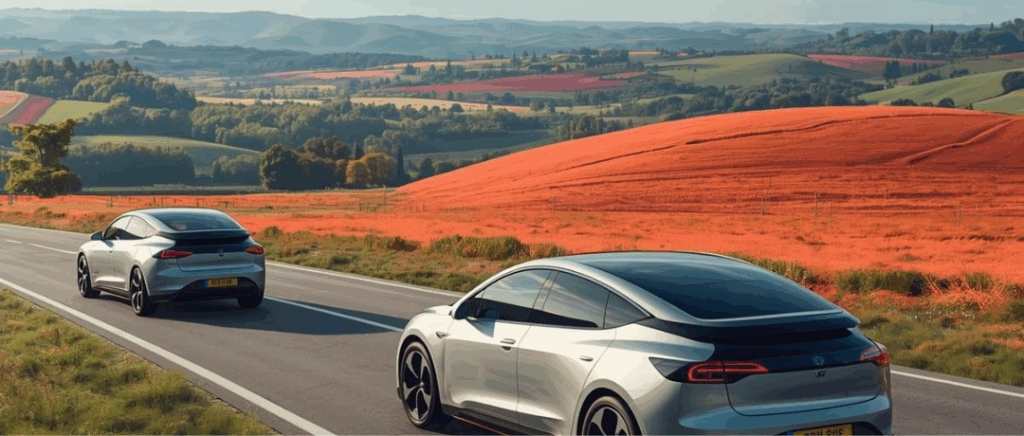Use the TCO simulator to calculate the total cost of ownership of your car and compare it with its internal combustion equivalent.
What's different with the MG ES5 compared to the ZS EV? And why the change?
The MG ES5 marks an evolution from the ZS EVreflecting the MG to modernise its range and remain competitive in the electric SUV market. The exterior design of the ES5 is much more dynamic and contemporary, with a shark-inspired front end and connected LED rear lights, contrasting with the more conventional lines of the ZS EV. The dimensions have been increased, offering a more spacious cabin.
The interior has undergone a major redesign, adopting a minimalist approach with a large central touchscreen and an all-digital dashboard, a far cry from the more traditional layout of the ZS EV. Built on the new Nebula platform, the ES5 boasts improved performance and a autonomy of up to 525 km with the battery a significant improvement on its predecessor.
These changes are designed to meet consumers' growing expectations in terms of design, technology and performance, while positioning MG as an innovative player in the market for electric cars. The move from the ZS EV to the ES5 represents a real generational leap, reflecting the rapid evolution of the sector and MG's ambition to establish itself as a major player.
Performance, range and design of the MG ES5: an electric SUV that lives up to expectations
MG ES5 performance: what are the impressive technical features?
The MG ES5 stands out for its impressive technical performance, representing a significant advance on the ZS EV. Equipped with an electric motor mounted on the rear axle, the ES5 develops a 168 bhp (125 kW) and 250 Nm of torque, giving it a very high top speed of 170 km/h and 0 to 100 km/h in 8 seconds. This configuration offers better driving dynamics than the ZS EV with front-wheel drive.
The ES5 offers two battery options: 49.1 kWh and 62.2 kWhThis significant improvement in performance, combined with a modern platform architecture (Nebula) and more generous dimensions, positions the This significant improvement in performance, combined with a modern platform architecture (Nebula) and more generous dimensions, positions the ES5 as a serious contender in the family electric SUV market, potentially rivalling established models such as the Tesla Model Y or the Volkswagen ID.4.
The independent front and rear suspensions contribute to superior driving comfort, while ensuring greater stability when cornering, enhancing the overall appeal of the vehicle for demanding drivers.
MG ES5 range: how far can you really travel on a single charge?
The MG ES5 offers significant improvements in range over its predecessor, the ZS EV. It is available with two battery options: a 49.1 kWh battery and a larger 62.2 kWh battery. With the With its 62.2 kWh battery, the ES5 boasts an impressive range of up to 525 km according to the Chinese CLTC standard.which is equivalent to approximately 450 km according to the WLTP standard European range. This substantial increase in range positions the ES5 as a serious contender in its category.
However, it's important to note that actual range can vary depending on a number of factors, such as driving style, weather conditions, use of air conditioning or heating, and the type of journey (urban, suburban or motorway).
In real-world conditions, we can expect an effective range of around 350-400 km with the 62.2 kWh battery, which is still very competitive for an electric SUV of this size and means that most daily journeys, and even longer trips with a few well-planned recharging breaks, can be envisaged with peace of mind.
MG ES5 design: how modern styling enhances the appeal of this electric SUV
The design of the MG ES5 represents a significant evolution on its predecessor, the ZS EV, and contributes greatly to the appeal of this electric SUV. The ES5 adopts a much more modern and dynamic styling language, moving away from the more conventional lines of the ZS EV. The shark-inspired front end boasts a bold design with split headlights and a large lower air intake, giving the vehicle a more assertive presence on the road.
The body lines are more sculpted and flowing, creating a more elegant silhouette and aerodynamics. At the rear, the T-shaped connected LED lights add a touch of sophistication and modernity.
These design elements, combined with more generous dimensions (4.476 m long, 1.849 m wide and 1.621 m high), give the ES5 a more premium and contemporary look. The interior is no exception, with a minimalist approach that highlights a large central touchscreen and an all-digital dashboard, creating a cabin that is both high-tech and uncluttered.
This overall aesthetic overhaul positions the MG ES5 as a serious contender in the electric family SUV segment, capable of competing visually with more established models while retaining the competitive price appeal characteristic of the MG brand.
Price and availability: How much does the MG ES5 cost on the market?
What is the launch price of the MG ES5 and how does it compare with the ZS EV?
The MG ES5 is positioned as a serious contender in the compact electric SUV market, with an aggressive pricing strategy characteristic of the MG brand. Here are the main details of its price and availability:
In China, where the vehicle was initially launched, the MG ES5 is expected to start at around 100,000 yuan (around €14,000). This very competitive price range reflects MG's determination to remain accessible in the electric vehicle market.
For the European market, although official prices have not yet been announced, we can expect the MG ES5 to be priced similarly to the ZS EV, or even slightly higher given its improvements. By way of comparison, the ZS EV is currently available from around €33,990.
It is important to note that the MG ES5 is positioned as a global model and will be exported to Europe. This suggests that MG is aiming to maintain its competitive pricing strategy in different markets.
In terms of positioning in relation to the ZS EV, the ES5 represents an evolution and should offer more features and technologies for a price that is probably slightly higher. However, MG will no doubt be looking to maintain a reasonable price differential to remain attractive to the competition.
The availability of the MG ES5 on the European market has not yet been precisely announced, but we can expect it to arrive in the next few months, potentially during 2025, to gradually replace the ZS EV in the MG range.
Who are the MG ES5's main competitors in the electric SUV market?
The MG ES5 enters a highly competitive segment of compact electric SUVs, where it faces a number of established competitors:
Volkswagen ID.4

Le Volkswagen ID.4 has established itself as a major player in the compact electric SUV segment, offering an impressive array of features. Its Pro version, equipped with the new APP550 engine, develops 286 bhp and 545 Nm of torque, accelerating from 0 to 100 km/h in 8.5 seconds and reaching a top speed of 160 km/h.
Range is one of the ID.4's strong points, with the 77 kWh battery capable of covering up to 522 km in real-world conditions. Fuel consumption is remarkably controlled, with 14.7 kWh/100 km on the road and 22.8 kWh/100 km on the motorway - competitive figures for an SUV in this category.
In terms of pricing, the ID.4 is positioned at the top end of the range, with a starting price of €47,950 for the 1st version, rising to €58,950 for the 1st Max version. The vehicle also stands out for its excellent level 2 driving aids, its remarkable comfort on long journeys, its rapid recharging capacity (20 to 80% in 25 minutes) and its generous interior space.
These attributes make the ID.4 a solid and versatile choice in the world of electric family SUVs.
Tesla Model Y

Le Tesla Model Y is an electric SUV that stands out for its performance, range and technical features. In terms of performance, the Performance version of the Model Y can reach 0 to 100 km/h in just 3.7 seconds, while the Long Range version also offers impressive performance, with a 0 to 100 km/h time of 5 seconds. In terms of range, the Model Y offers a WLTP range varying from 480 km for the Performance version to 533 km for the Long Range version, with actual results of around 457 km depending on driving conditions.
The vehicle is equipped with a 75 kWh battery, offering a good compromise between power and weight. In terms of fuel consumption, the Model Y averages 16.4 kWh/100 km, which is particularly competitive for an SUV of its size.
In terms of price, recent price increases have repositioned the Model Y at the top end of the electric SUV range: the rear-wheel drive version is now available from €40,990 (with the environmental bonus deducted), while the long-range version is priced at €51,990 and the performance version at €57,990. These prices make the Model Y an attractive choice in the electric SUV segment, especially given its performance and range.
Hyundai Kona Electric
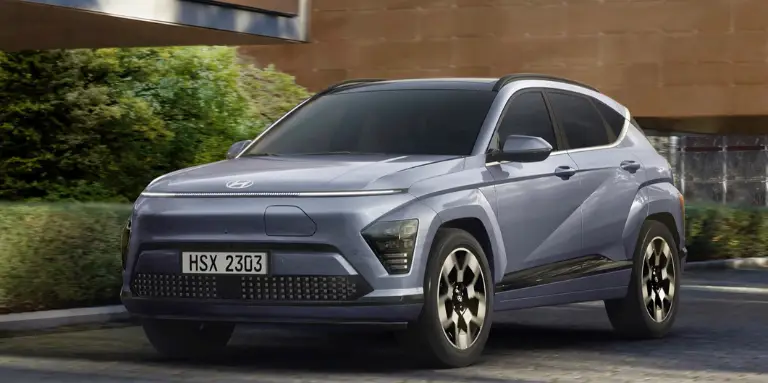
Le Hyundai Kona Electric is a compact electric SUV that is both powerful and versatile. In its latest version, it offers two powertrains: a standard version with a 48.4 kWh battery and a 156 bhp engine, and a more powerful version equipped with a 65.4 kWh battery developing 217 bhp. This second option offers an impressive range of up to 514 km in the WLTP combined cycle. The Kona Electric stands out for its dynamic performance, accelerating from 0 to 100 kph in just 7.8 seconds for the most powerful version, with a top speed of 172 kph. In terms of recharging, it has an 11 kW on-board charger and can accept a DC charging capacity of up to 102 kW.
The vehicle also benefits from significant improvements in terms of driving comfort and technological equipment, although some users find the driving aids sometimes intrusive. With a starting price of around €41,900 for the top-of-the-range version, the Kona Electric is an attractive choice in the compact electric SUV segment, offering an excellent balance between performance, range and equipment.
Skoda Enyaq iV
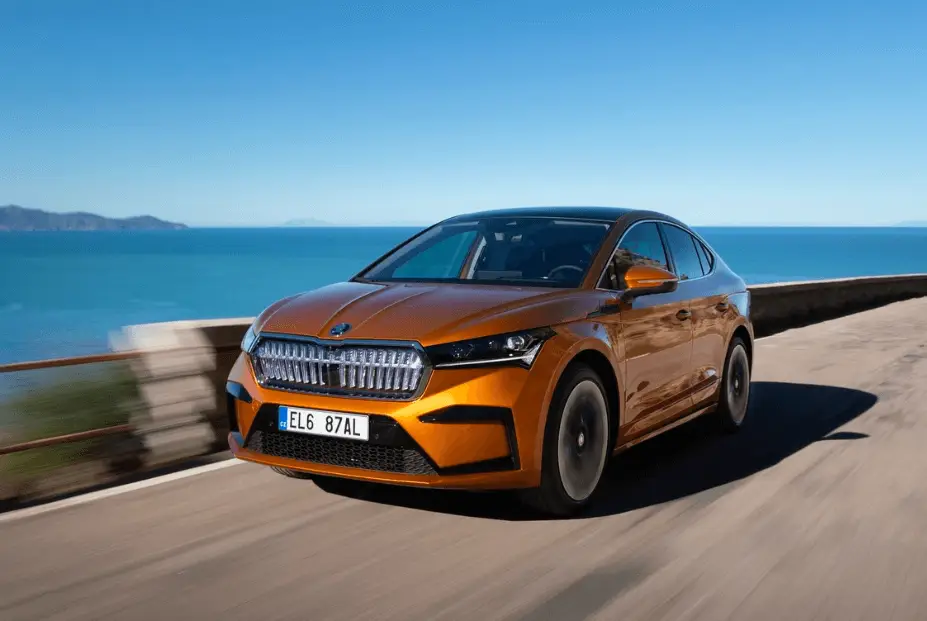
Le Skoda Enyaq iV offers several versions with batteries ranging from 60 kWh to 77 kWh, providing a WLTP range of between 397 km and 565 km depending on the model. The iV 80 version, fitted with a 77 kWh battery, has a WLTP range of up to 544 km.
In terms of performance, the Enyaq iV 80 has a 204 bhp rear engine that accelerates from 0 to 100 km/h in 8.7 seconds. Its average fuel consumption ranges from 16.9 kWh/100 km in an urban environment to 24.5 kWh/100 km at 130 km/h on the motorway, giving a real range of around 314 km at high speeds.
Charging is carried out via a Combo-CCS port, with a maximum power of 135 kW in direct current, making it possible to charge from 10 to 80 % in 29 minutes. In alternating current, the on-board 11 kW charger provides a full charge in 7.5 hours on a three-phase installation.
Pricing for the Enyaq iV starts at €46,460 for the 60 kWh version, which may qualify for an environmental bonus of up to €7,000 depending on the conditions. Charging costs vary between €3.1 and €4.1 per 100 km for home charging, and between €5.3 and €8.1 per 100 km at fast public charging points.
Peugeot e-2008
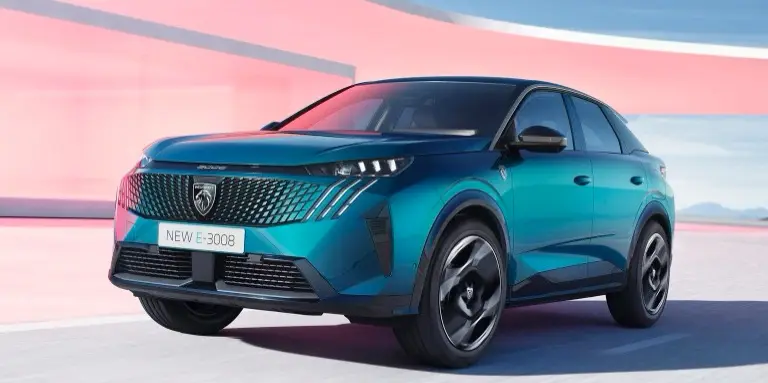
Le Peugeot e-2008 has established itself as a key player in the compact electric SUV segment, thanks to a recent restyling and significant technical improvements. The new model features a new 156 bhp electric motor, offering enhanced performance with a 0 to 100 km/h time of 9.1 seconds.
Range, a crucial factor for any electric vehicle, takes a leap forward thanks to an optimised 54 kWh battery, promising up to 406 km in the WLTP cycle. Although tests in real-life conditions qualify this figure, the e-2008 remains competitive with a practical range of 344 km on the road. Its controlled fuel consumption of 14.8 kWh/100 km in combined use is a testament to its appreciable efficiency.
When it comes to recharging, compatibility with DC rapid charging up to 100 kW provides welcome flexibility for long journeys. Priced from €41,600, the e-2008 justifies its price tag with a seductive cocktail of design, technology and performance. While there is still room for improvement on a few points, such as the braking system, this electric SUV is a good choice for drivers looking for a vehicle that combines style, comfort and energy efficiency.
Renault Mégane E-Tech Electric

La Renault Mégane E-Tech Electric stands out as an innovative electric vehicle, combining the characteristics of a compact car with those of a coupé crossover. Available in three trim levels (Equilibre, Techno and Iconic), it offers two power levels (130 or 220 bhp) and two battery capacities (40 or 60 kWh). The top-of-the-range version, with a 220 bhp engine and 60 kWh battery, promises an impressive WLTP range of up to 450 km.
In terms of performance, the Mégane E-Tech Electric does not disappoint. Despite weighing just 1,624 kg, it is remarkably responsive, accelerating from 0 to 100 km/h in just 7.4 seconds and reaching a top speed of 160 km/h. The car's roadholding is particularly impressive, with precise steering and an incisive front end that inspire confidence in the driver.
The vehicle's interior boasts a modern, technological design, with a large central touchscreen and digital instrument panel. Driving aids are varied and sophisticated, including an intelligent speed limiter and an automatic emergency braking system when reversing.
The 60 kWh lithium-ion battery, developed in collaboration with LG, offers an impressive energy density of 600 Wh/l. When it comes to rapid recharging, you can recover up to 300 km of range in just 30 minutes on a fast terminal.
With a starting price of €44,700 for the Techno EV60 220 bhp version (excluding environmental bonus), the Mégane E-Tech Electric is an attractive option in the premium compact electric vehicle segment, combining performance, range and advanced technologies.
Comparative table of MG ES5 competitors
| Model | Power | Range (WLTP) | Battery capacity | Consumption | Starting price | Recharge time (20-80%) |
|---|---|---|---|---|---|---|
| Volkswagen ID.4 | 286 hp | 522 km | 77 kWh | 14.7 kWh/100 km | 47 950 € | 25 minutes |
| Tesla Model Y | Up to 534 bhp | 533 km | 75 kWh | 16.4 kWh/100 km | 40 990 € | 30 minutes |
| Hyundai Kona Electric | Up to 217 bhp | 514 km | 65.4 kWh | 14.8 kWh/100 km | 41 900 € | 45 minutes |
| Skoda Enyaq iV | 204 ea | 544 km | 77 kWh | 16.9 kWh/100 km | 46 460 € | 29 minutes |
| Peugeot e-2008 | 156 hp | 406 km | 54 kWh | 14.8 kWh/100 km | 41 600 € | 30 minutes |
| Renault Mégane E-Tech | 220 hp | 450 km | 60 kWh | Not specified | 44 700 € | 30 minutes |
Conclusion
The MG ES5 marks a significant step forward in compact electric SUVs, replacing the ZS EV with a modern design, extended range (up to 525 km CLTC) and technological options at a competitive price of around €33,990 in Europe. Faced with rivals such as the Tesla Model Y and the Volkswagen ID.4, the ES5 stands out as an affordable, high-performance alternative.
If you want to buy an electric vehicle or install a charging point, don't hesitate to call on Beev!
